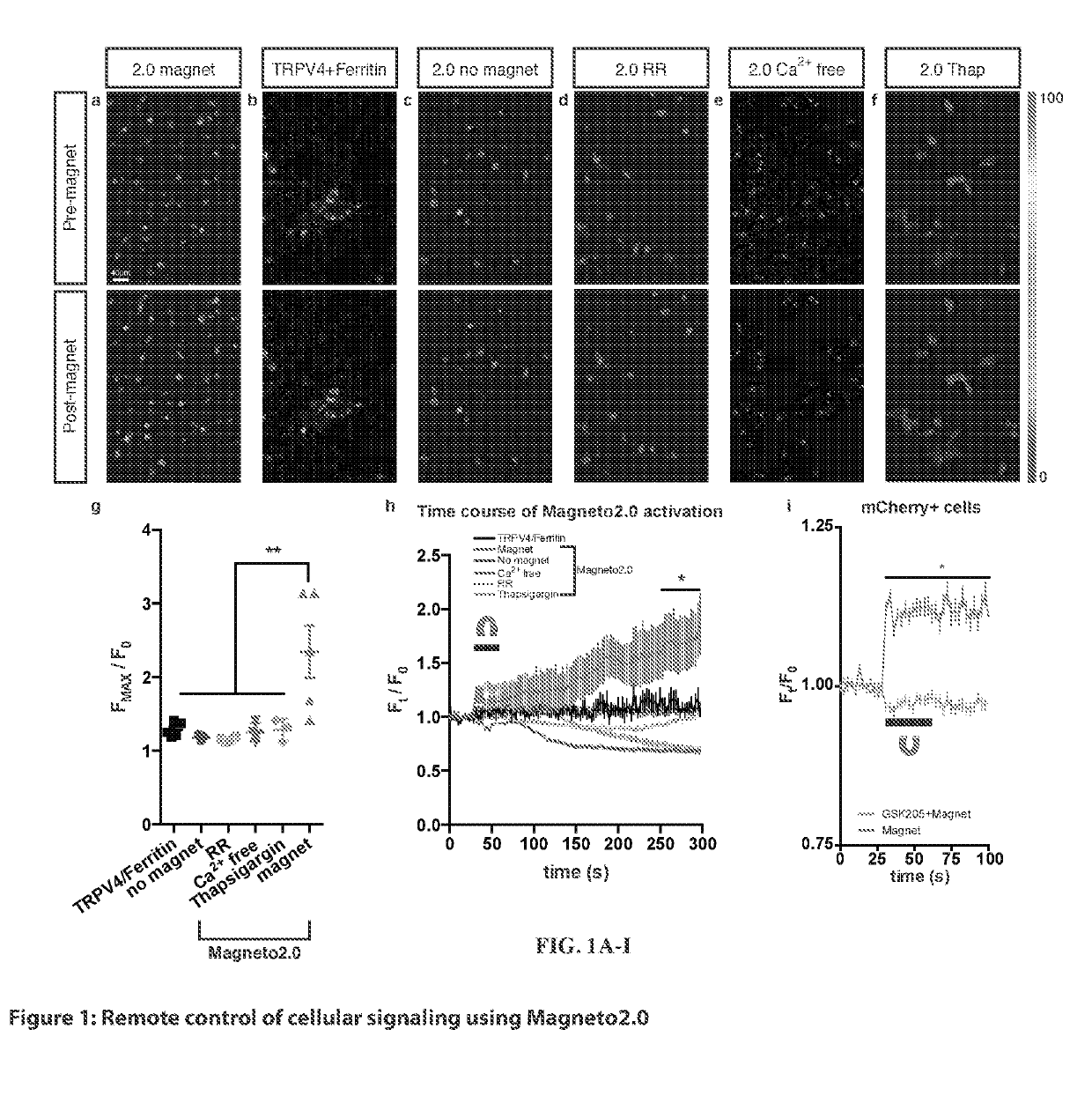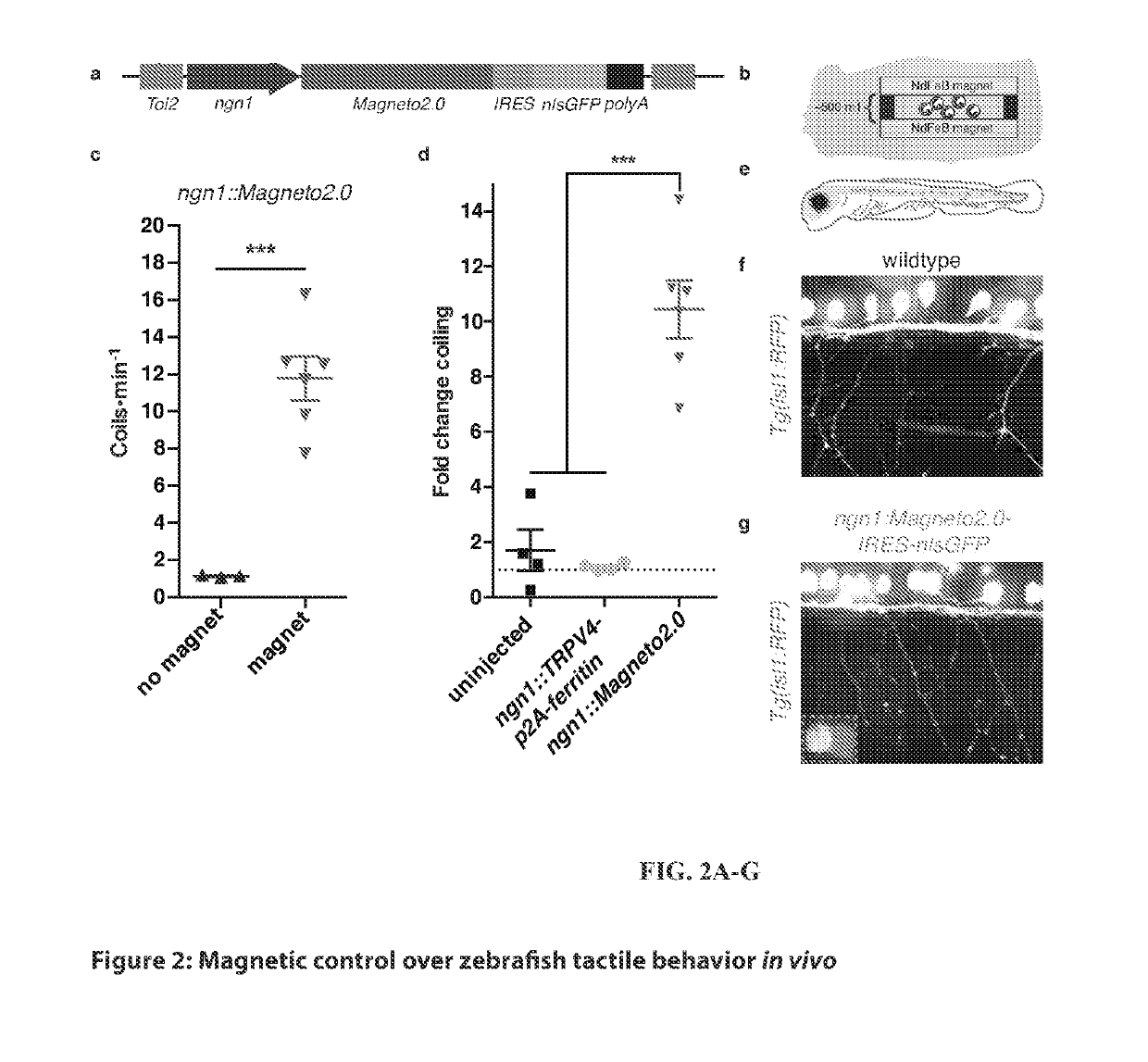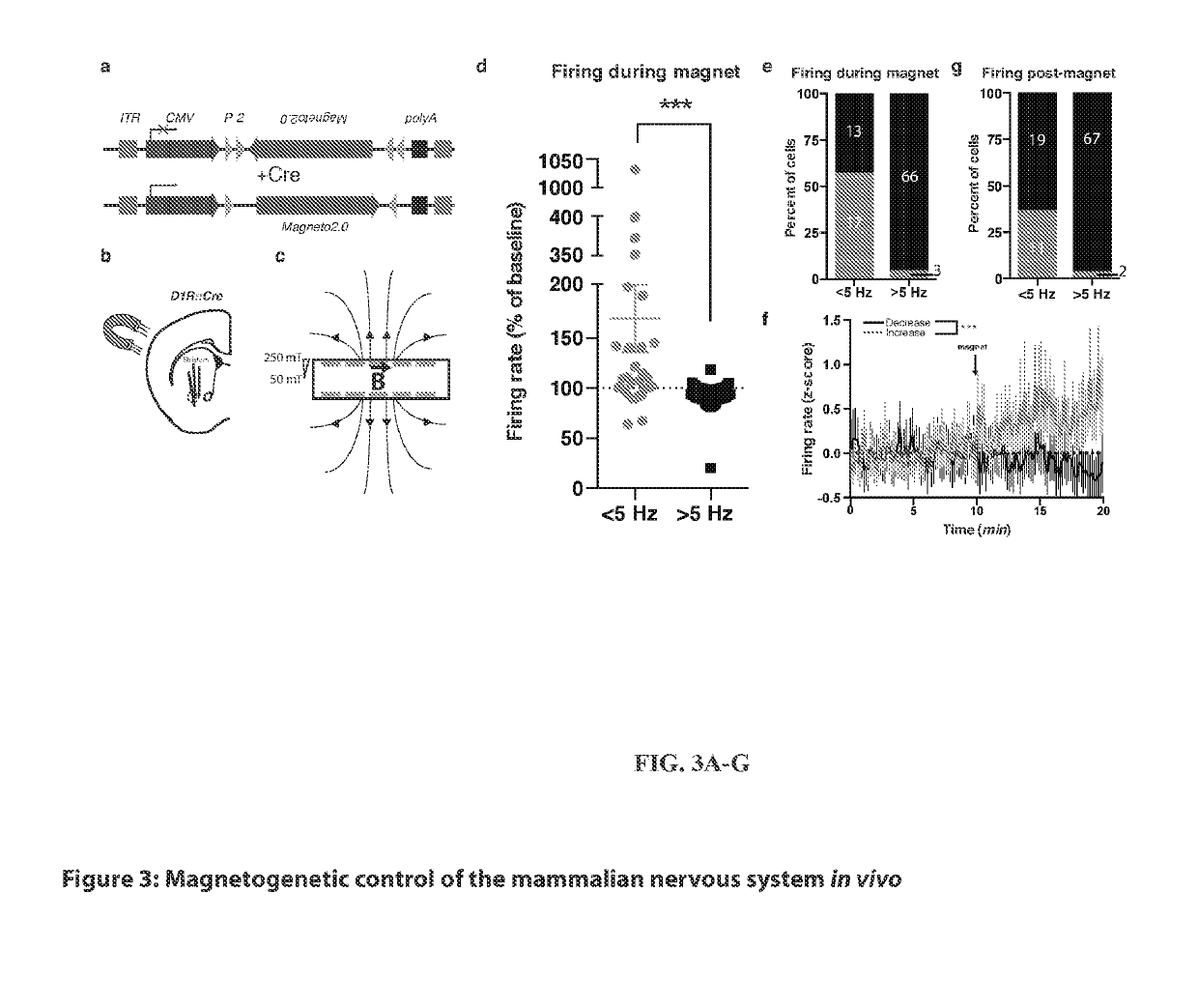Compositions and their use for controlling the nervous system in vivo
a technology of nervous system and composition, applied in the field of compositions and their use for controlling the nervous system in vivo, can solve the problem of limited spatial spatial spatial planning of optical strategies
- Summary
- Abstract
- Description
- Claims
- Application Information
AI Technical Summary
Benefits of technology
Problems solved by technology
Method used
Image
Examples
embodiments
[0251]In one aspect, a fusion protein construct of the invention or an expression vector of the invention can be administered by a route selected from, including, but not limited to, intravenously, intrathecally, locally (including in the tissue of interest, such as muscle or brain), intramuscularly, topically, orally, intra-arterially, parenterally, etc. Administration can be more than once. Based on the teachings herein, one of ordinary skill in the art can determine how often to administer the compound, the dose to be used, and what combination of other agents it can be administered with such as therapeutic agents and / or other drugs or compounds such as antimicrobial agents, anti-inflammatory agents, etc. Also, one of ordinary skill in the art can also determine if all compounds should be administered simultaneously or not.
[0252]Numerical ranges recited herein by endpoints include all numbers and fractions subsumed within that range (e.g., 1 to 5 includes 1, 1.5, 2, 2.75, 3, 3.90...
example 1
Methods
[0331]Mice Information
[0332]All animal experiments were conducted in accordance with the University of Virginia IACUC. All mice were maintained on a C57Bl / 6 background. Mice were housed in a vivarium on a 12-hour light / dark cycle. Mice were housed at between 1-3 mice per cage. Viral injection experiments using D1R::Cre mice were conducted starting at 8 weeks of age. All mice used in this study were injected between 8-10 weeks of age. Only male mice were used in this study.
[0333]Zebrafish Husbandry
[0334]All animal studies were approved by the University of Virginia IACUC. Zebrafish strains used in this study were: AB* and Tg (isl:rfp). Embryos were raised at 28.5° C. in egg water or embryo medium and staged according to hour post fertilization (hpf) or days post fertilization (dpf). Embryos of both sexes were used for experiments (3).
[0335]Molecular Biology
[0336]Molecular biology was performed using standard protocols. Plasmid DNA was purified using kits from Qiagen. Restricti...
example 2
[0377]Cellular networks in general, and neural networks in particular, exhibit dynamic properties that enable rapid transitions between multiple activity states. In order to recapitulate these dynamic activity states via artificial actuator technologies, development of actuators that can regulate activity in multiple directions is essential. Currently, opto- and chemogenetic toolboxes are equipped with both excitatory and inhibitory receptors that augment dynamic control over neuronal activity. However, because optogenetic technologies are invasive and chemogenetic technologies lack temporal precision, it is important to develop remotely controlled actuators to achieve non-invasive, temporally precise stimulation. Recently, remote control over neuronal activity by radiogenetic (Stanley, Chen) or magnetogenetic actuators (Wheeler, Stanley) allowed unprecedented control over the activity of genetically specified populations of cells, and even in freely behaving animals (Wheeler et al....
PUM
| Property | Measurement | Unit |
|---|---|---|
| diameter | aaaaa | aaaaa |
| pH | aaaaa | aaaaa |
| mole fraction | aaaaa | aaaaa |
Abstract
Description
Claims
Application Information
 Login to View More
Login to View More - R&D
- Intellectual Property
- Life Sciences
- Materials
- Tech Scout
- Unparalleled Data Quality
- Higher Quality Content
- 60% Fewer Hallucinations
Browse by: Latest US Patents, China's latest patents, Technical Efficacy Thesaurus, Application Domain, Technology Topic, Popular Technical Reports.
© 2025 PatSnap. All rights reserved.Legal|Privacy policy|Modern Slavery Act Transparency Statement|Sitemap|About US| Contact US: help@patsnap.com



